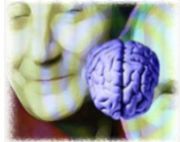
Defect Protein Triggers a Hereditary Form of Parkinson’s Disease
The Kufor-Rakeb syndrome is a rare hereditary variant of Parkinson’s disease which can occur as early as adolescence. Affected persons not only have the typical symptoms of Parkinson’s, but also have difficulties in the movements of the eyes and progressive dementia. An international team of scientists has now identified the gene that is responsible for causing this disease.
”We studied two families in which the Kufor-Rakeb syndrome (KRS) has occurred in several family members,” says the leader of the study, Professor Christian Kubisch of the University of Cologne. “During our study we discovered the gene ATP13A2. Both copies of this gene show mutations in the affected family members. Each of these gene mutations leads to a loss of function of the gene.”
To date, little is known about the protein whose blueprint is contained in gene ATP13A2. However, Professor Kubisch’s research team discovered that this protein occurs in the digestive apparatus of the cell – the so-called lysosomes. The cell digestive organs look like small blisters. They take in proteins and other materials that are no longer needed and degrade them. As scientists could observe by means of staining methods, the ATP13A2 protein is located in the membrane of these lysosomes and is formed most strongly in the brain, especially in the substantia nigra, a brain region which is known to play a central role in Parkinson’s disease.
Since in KRS patients both copies of the ATP13A2 gene are unfavorably mutated, only defective ATP13A2 protein is formed in their body cells. According to first findings of the researchers, this mutated ATP13A2 protein is not integrated into the membrane of the lysosomes. Rather, it is recognized as defective in another cell organelle, the endoplasmatic reticulum, and is subsequently degraded by the cell. Professor Kubisch surmises that perhaps for that reason the digestive activity of the lysosomes is disturbed. “When certain waste materials are no longer degraded in a normal manner and build up in the cells, this could be toxic for the cell,” Kubisch explains.
Interestingly, the scientists were able to show that this gene is also clearly more active in brains of patients who suffer from Parkinson’s than in the brain of healthy persons. “We have first indications that ATP13A2 is not only involved in the rare Kufor-Rakeb syndrome, but also possibly in other Parkinson’s diseases,” says Professor Birgit Liss of the University of Marburg.
In further studies the scientists want to find out what function the ATP13A2 protein has and what role it plays in the pathogenesis of Parkinson’s and other degenerative diseases of the nervous system.





